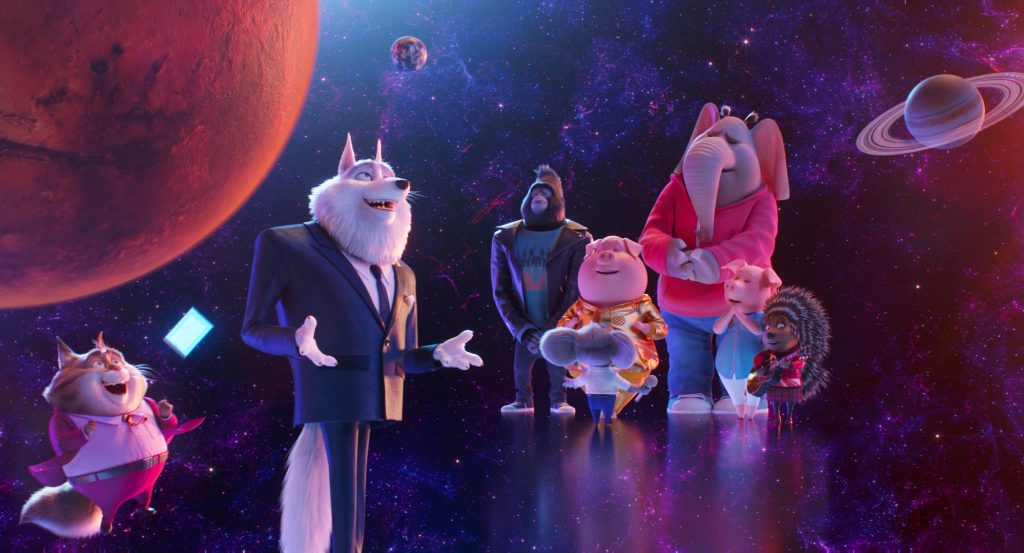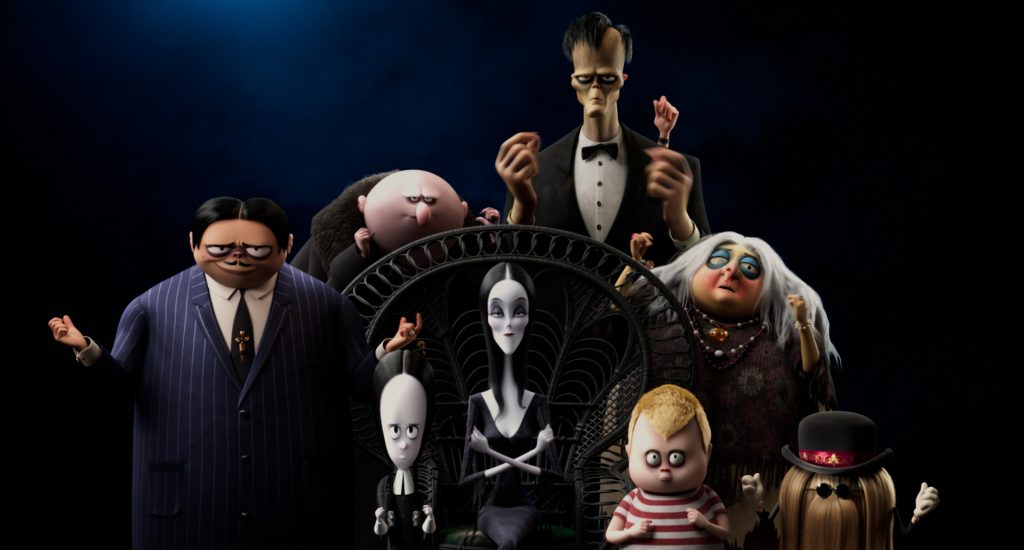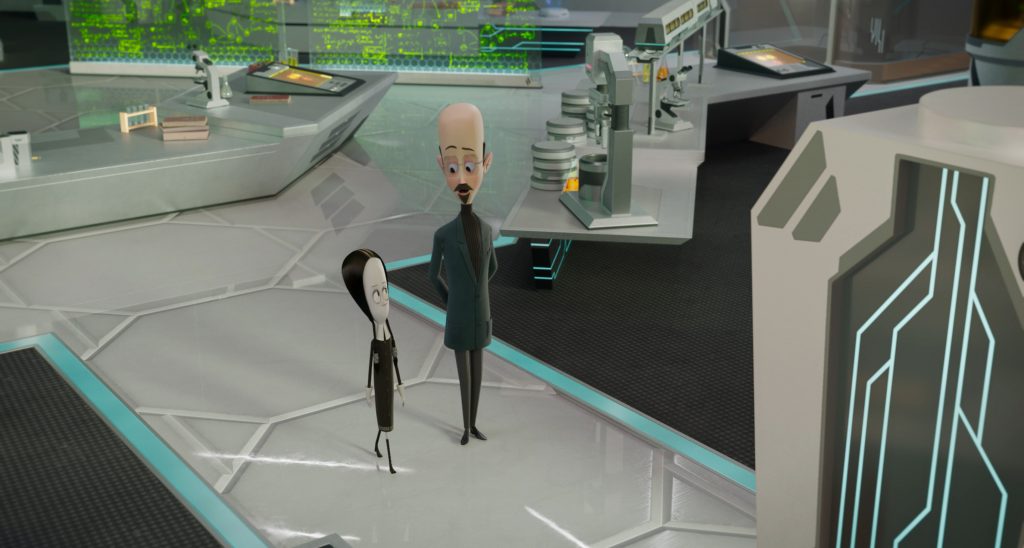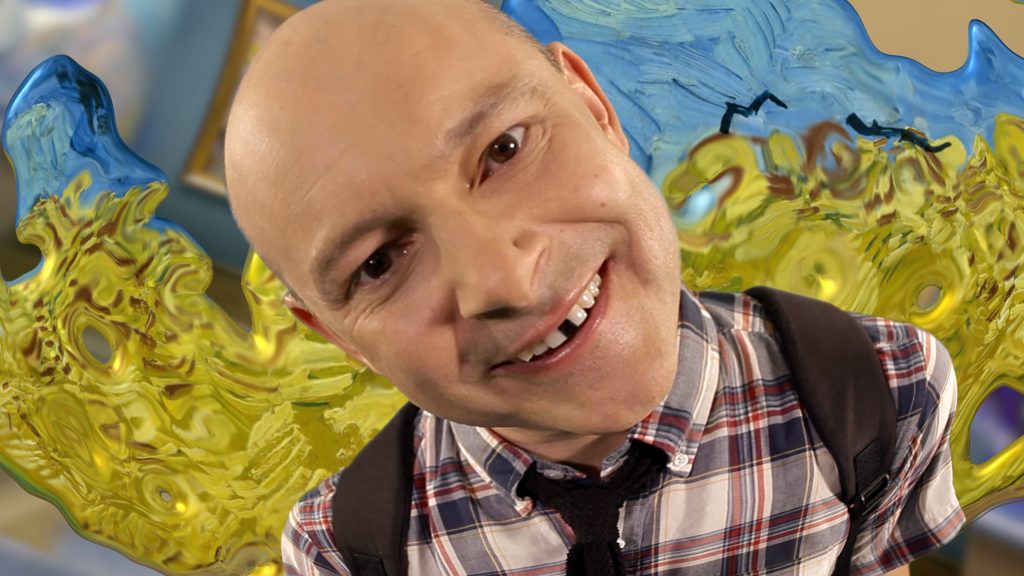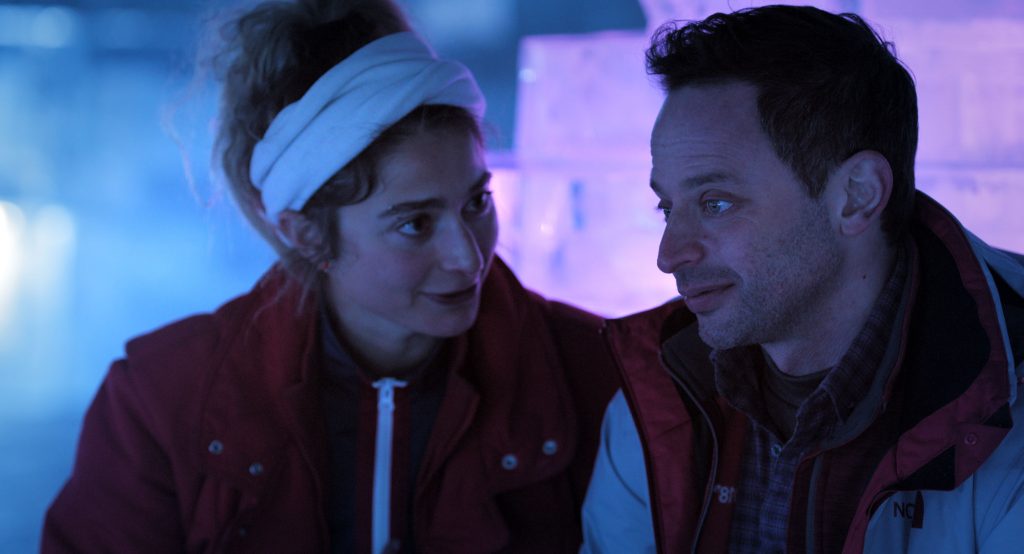September 23, 2022
by Carla Hay

Directed by Olivia Wilde
Culture Representation: Taking place in a fictional California community named Victory, the sci-fi/drama film “Don’t Worry Darling” features a predominantly white cast of characters (with a few African Americans and Asians) representing the working-class, middle-class and wealthy.
Culture Clash: A homemaker wife with a seemingly perfect life finds her life unraveling when she witnesses things that are too disturbing to ignore, but other people try to convince her that she’s paranoid and mentally ill.
Culture Audience: “Don’t Worry Darling” will appeal mainly to people who are fans of stars Florence Pugh and Harry Styles, but this disappointing dud of a movie serves up an over-used concept that becomes tedious and repetitive with a bungled ending.
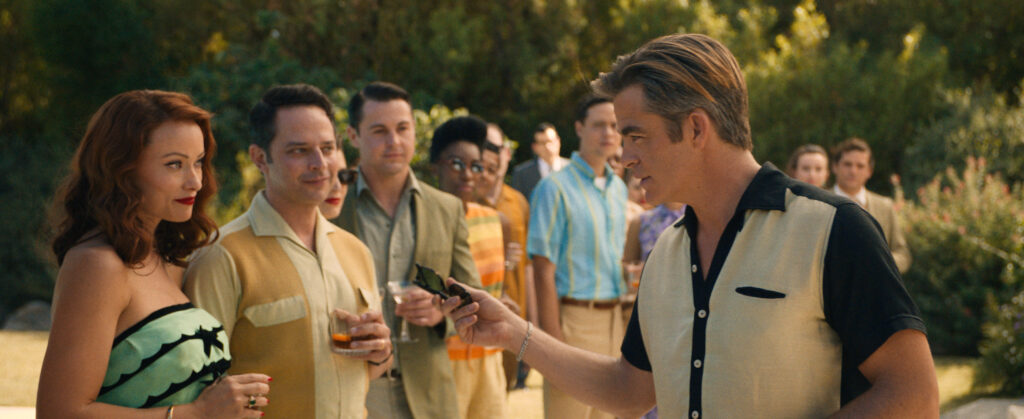
Take a little bit of “The Stepford Wives,” add a lot of “The Twilight Zone,” and remove any real ingenuity. What’s left is a mishandled mush called “Don’t Worry Darling.” The central mystery of the story is too easy to solve, because a similar concept has been used in much better movies. Even without that problem and even with Florence Pugh’s talent, “Don’t Worry Darling” comes undone by a sloppily constructed conclusion.
Directed by Olivia Wilde and written by Katie Silberman, “Don’t Worry Darling” is one of those movies where the off-screen drama is more interesting than the movie itself. This review won’t rehash all the tabloid stories (including all the brouhaha at the movie’s world premiere at the 2022 Venice International Film Festival), but what most people will remember about “Don’t Worry Darling” is that it’s the movie that led to Wilde and co-star Harry Styles becoming romantically involved in real life. “Don’t Worry Darling” isn’t a complete train wreck, but it spins its wheels too many times to the point of monotony, and everything goes completely off the rails in the movie’s last 15 minutes.
We’ve seen this scenario many times before: A movie starts out with a picture-perfect couple who seems to have a picture-perfect life. They seem to be passionately in love. They live in a well-kept house with a perfectly manicured lawn, and the neighboring houses have an eerily similar aesthetic. And all the neighbors lead seemingly idyllic lives too. But, of course, it’s later revealed that the community is far from perfect and is actually quite hellish.
In “Don’t Worry Darling,” the central “perfect” couple are spouses Alice Chambers (played by Pugh) and Jack Chambers (played by Styles), who live in a planned California community named Victory, which is filled with palm trees and is near a desert. (“Don’t Worry Darling” was actually filmed in Palm Springs, California.) Based on the fashion, hairstyles and cars, Alice and Jack seem to be living in the 1950s. Alice is a homemaker, while Jack (and the other men in the community) all work for the Victory Project, a mysterious technological business venture led by a charismatically creepy CEO named Frank (played by Chris Pine). Jack’s job title is technical engineer.
Alice and Jack, who are both in their 20s, have no children. Jack and Alice tell people that they haven’t started a family yet because they want to enjoy life for a while in a child-free marriage. The movie’s opening scene shows Alice and Jack having a house party, where everyone is drunk or tipsy. Alice and some of the other people are playing a game to see who can balance a tray and drinking glass the longest on the top of their heads.
Two of the party guests are a married couple in their late 30s named Bunny (played by Wilde) and Dean (played by Nick Kroll), who like to think of themselves as the “alpha couple” of the Victory community because they’re older than everyone else. Dean is especially eager to be perceived as Frank’s favorite employee at Victory. Bunny (who is sassy and sarcastic) and Dean (who is high-strung and neurotic) have a son and a daughter who are about 5 to 7 years old. Bunny half-jokingly tells Alice that the kids like Alice more than they like Bunny.
Another couple in the Victory community are spouses Peg (played by Kate Berlant) and Peter (played by Asif Ali), who are little quirky but ultimately underwritten and underdeveloped. If Peg and Peter weren’t in the movie, it would have no real impact on the plot at all. Also underdeveloped is a scowling scientist character named Dr. Collins (played by Timothy Simons), who shows up later in the movie and is described as one of the founders of the Victory community.
Frank’s wife is an emotionally aloof diva named Shelley (played by Gemma Chan), who leads the Victory women in group ballet classes. All of the women seem to be a little bit afraid of Shelley. She gives the impression that she can be ruthless if anyone betrays her or the Victory Project.
One day, at one of the ballet classes, Shelley tells the assembled women that a new couple is moving into the neighborhood because the husband will be starting a new job at Victory. The spouses’ names are Bill Johnson (played by Douglas Smith) and Violet Johnson (played by Sydney Chandler), who are both anxious to fit in with this tight-knit Victory community. Bill is a little bit wimpy and socially awkward, while Violet is very demure and introverted.
To welcome Bill and Violet to the Victory community, Frank assembles the community members outdoors on the streets and gives a rousing speech. Bill and Violet look a little overwhelmed. Dean tries to assert himself by chastising Bill for not thinking of Frank with enough reverence. Later, Alice privately tells Bunny that Violet reminds Alice of a “beautiful, terrified baby deer.”
When talking to Bunny, Alice notices a neighbor named Margaret (played by KiKi Layne) standing outside on the front lawn of the house that Margaret shares with her husband Ted (played by Ari’el Stachel). Margaret, whose eyes are closed, seems to be in a daze as she clutches a red toy plane in her hand. It’s enough to say that Alice sees some other disturbing things pertaining to Margaret, including an apparent suicide attempt where Margaret is up on her house roof and looks like she’s ready to jump. (The trailer for “Don’t Worry Darling” already revealed this plot development.)
At the outdoor gathering, Margaret asks people, “Why are we here?” Ted doesn’t like the way that Margaret is asking is question, so he tells Margaret to keep quiet and whisks her away into their house. Margaret is rarely seen out of the house after that, while Alice sees indications that Ted is keeping tight control over Margaret and trying to prevent Margaret from interacting with other people.
Margaret has also been speaking out against Frank and questioning his intentions. It isn’t long before gossip spreads in the neighborhood that Margaret is a mentally ill troublemaker who must be shunned. If this Victory community sounds like a cult, a party scene at Frank’s mansion removes all doubt.
This party scene (like most of the movie’s plot) is already partially revealed in the “Don’t Worry Darling” trailer. At this party, Frank asks Dean in front of the assembled Victory people: “Dean, what’s the enemy of progress?” Dean dutifully replies, “Chaos.” Frank then says, “I see greatness in every single one of you. What are we here for?” The crowd chants, “We’re changing the world!”
Victory has a trolley that is the main form of public transportation in the community. One day, Alice is the only passenger in the trolley when she sees in the distance that a red plane has crashed into a cliff area near the desert. When Alice asks the trolley driver (played by Steve Berg) if he saw the plane crash, he says he didn’t see anything.
Alice begs the trolley driver to go to the plane crash site to get help, but the driver is too afraid and says that it’s a restricted area. Alice decides to walk to the area by herself. What happens after that sets her on a path where she and other people start to question her sanity.
Unfortunately, the trailer for “Don’t Worry Darling” already gives away the fact that this movie has men in red jumpsuits chasing after people, so it’s easy to figure out that these men are sent to oppress people who “disobey” the Victory rules. Guess who becomes one of those targets? It’s all so predictable.
Pugh does a skillful job of portraying Alice’s psychological torment, but ultimately, Alice (like all of the characters in this movie) are very hollow. Styles is adequate as Alice’s increasingly estranged husband Jack, who is torn between his loyalty to Alice and his loyalty to Victory. But after a while, the obvious and over-used plot development of “the woman who is not believed and labeled as mentally ill” gets run into the ground early and often in “Don’t Worry Darling,” At a certain point in the movie, you just know the men in the red jumpsuits will be part of a big chase scene, because it’s already revealed in the movie’s trailer.
“Don’t Worry Darling” tries to have some visual flair, with repetitive images of the people of Victory moving in sync with each other, as if they’re pre-programmed robots. This visual styling is shown in the scenes with the ballet classes, as well as the Victory community’s morning ritual of the wives going on their front lawns to wave goodbye to their husbands, who drive off to go to work in perfect sync in their flashy cars. The movie also repeats images (many of them psychedelic) of things in the shape of a circle, whether they are close-ups of eye pupils or women dancing like they’re in a Busby Berkeley musical.
All of this eye-catching cinematography comes off as shallow and a bit pretentious after a while, because the story falls so flat toward the end. “Don’t Worry Darling” hastily throws in some heavy-handed feminist messages but doesn’t have anything clever or new to say that 1975’s “The Stepford Wives” didn’t already cover decades ago. The half-baked ending of “Don’t Worry Darling” just brings up questions that are never answered.
Wilde and Silberman previously collaborated on the 2019 teen comedy “Booksmart,” which was Wilde’s feature-film directorial debut. And although the critically acclaimed “Booksmart” uses a lot of familiar teen comedy plot devices, “Booksmart” has dialogue, acting and character development that are appealing. The same can’t be said for “Don’t Worry Darling,” which has talented cast members, who look all dressed up but have nowhere artistically to go in this boring sci-fi tripe posing as an intriguing psychological thriller.
Warner Bros Pictures released “Don’t Worry Darling” in U.S. cinemas on September 23, 2022.


